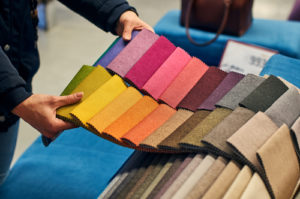
Latest Fashion Trends
Fashion industry players these days cannot deny there is no better time than now to take positive steps in manufacturing. Huge change is being facilitated thanks to the spike in technological advancements. The industry is seeing the overall approach slowly moving towards accommodating lower quantity manufacturing of high-added value, customizable, more sustainable, and innovative products. Additive manufacturing is a significant driver of change in today’s fashion space.
Also known as 3D printing, additive manufacturing is an approach presenting a technology that is designed to eliminate many constraints of manufacturing methods based on conventional subtractive techniques, and to introduce a retail model that is radically new.
As industry insiders pay attention to the changing product manufacturing scene, McKinsey predicts that 3D printing could start having a financial effect of $550 billion each year by 2025. Besides, in regards to the global 3D printing market size, this was estimated at $3.1 billion back in 2013, and is likely to grow to $21 billion by 2020.
Reasons to Adopt Additive Manufacturing
The use of AM is nothing new. What is new, however, is how the manufacturing technology developed in a way that caused it to be termed a game-changing innovation. As a disruptive manufacturing technology, 3D printing is considered as one which turns data into things that in turn enable material efficiency gains, supply-chain simplification, and mass-customization.
Challenging the foundations on which much of conventional manufacturing understanding, experience, and practices are based, additive manufacturing makes producing finished, colored, ready-to-wear and net-shaped garments possible, and that too, in one manufacturing operation. A relatively less wasteful method than the present technique and process, additive manufacturing is a technology signaling a shift which could transform the clothing segment worldwide. Imagine designers being able to make personalized and ready-to-wear fashion products in a day.
Shifting focus on creativity and design, AM applied to clothes design is easily translated into manufacturing, without needing all too thorough manufacturing process knowledge. Limiting the human hand in the product manufacturing process, it is still worth noting that 3D printing does not replace mass production, but it enables fresh business models like ‘bridge manufacturing’.
3D Printing, Bringing About New Age in the Fashion World
Garment manufacturing generates 1.80 million metric tons of waste material, which is what mainly drives the adoption of additive manufacturing. This is why manufacturing should head in a path where the process can be sustainable, affordable, and an ethical reality.

